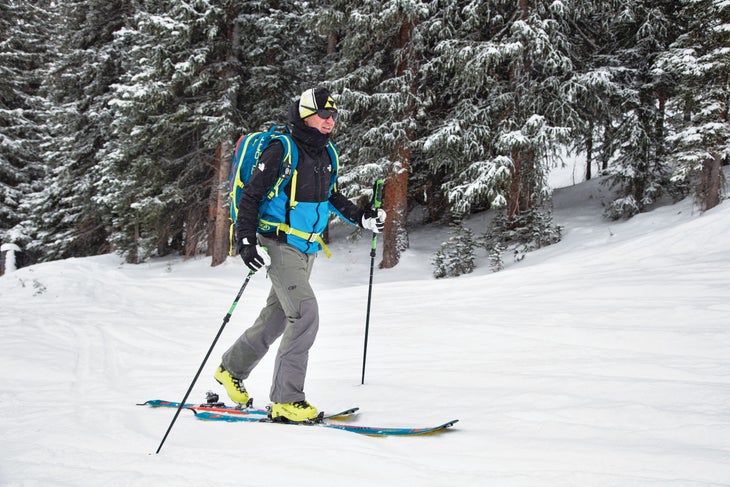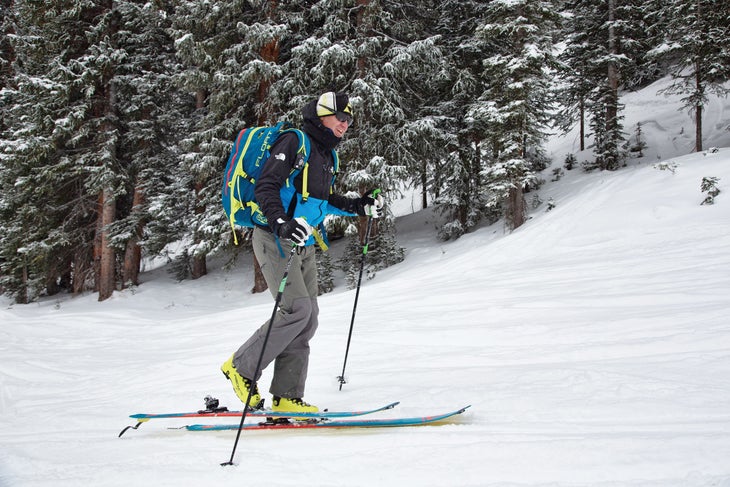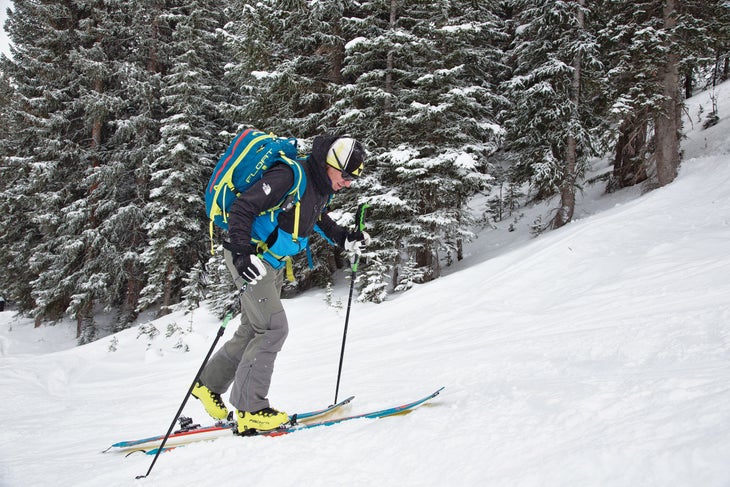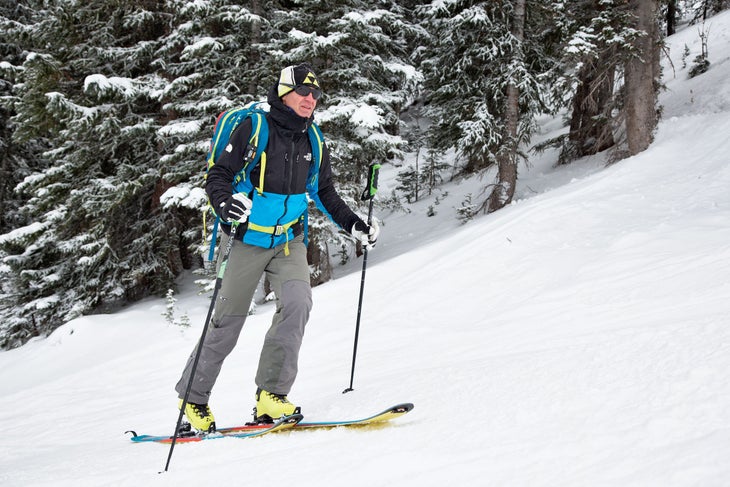Products You May Like
Get full access to Outside Learn, our online education hub featuring in-depth fitness, nutrition, and adventure courses and more than 2,000 instructional videos when you sign up for Outside+
Sign up for Outside+ today.
Stuck in a skills rut? Check out SKI’s online education courses on Outside Learn, home to hundreds of video tutorials. Get expert tips on how to level up from industry pros like Glen Plake, Wendy Fischer, Daron Rahlves, and more.
Skinning, touring, uphilling—whatever you want to call it, it all boils down to the same concept: moving uphill on skis to earn your turns. Seems straightforward enough, especially if you have the right gear: lightweight skis, skins that fit those skis, touring bindings, ski boots with walk mode, and adjustable ski poles. While the right gear will certainly make traveling uphill easier, it won’t do all the work for you. At the end of the day, skinning is still a vigorous workout, and many beginners (and even those with ski touring experience) don’t make it any easier on themselves.
Watch: SKI’s Uphilling 101 online course on Outside Learn
Laboring under the assumption that ski touring is simply walking on skis, some put in twice as much effort lifting their skis between steps, charging straight up steep slopes instead of taking the path of least resistance, and adjusting their balance with every move to get their skins to stay connected to the snow. If you learn how to move efficiently, you’ll have a lot more gas left in the tank when it comes to the fun part: skiing downhill.
The key to moving efficiently in the skin track? Posture and stride technique, says Charlie MacArthur, longtime professional ski instructor at Aspen Snowmass, Colo. Where you stand on your skis, how long your stride is, and even where you look can impact how much energy you expend. Ready to maximize your uphill momentum and minimize energy waste? Follow MacArthur’s cues—and don’t forget to undo your top boot buckles and switch boots to walk mode for the uphill portion.
Tips for moving uphill more efficiently
1. Glide, don’t walk.
One of the main mistakes beginner uphillers make is lifting their skis between strides as if they’re walking on snowshoes, which expends a lot of energy. Keep skis on the snow and take advantage of the skin’s ability to glide forward. Simply push/pull the ski forward between strides.


2. Look uphill.
It’s easy to get fatigued and start looking down at the snow towards your ski tips. This inhibits breathing and can also break your skins’ contact with the snow as you begin to lean forward and push back on your skis instead of pushing them forward.
3. Low means long, steep means short.
Use longer strides on low-angle terrain and shorter strides when ascending steeper slopes. This also goes for pole length: When ascending moderate to steep-angle slopes, keep poles the same length as when skiing downhill. When traveling on low-angle or flat slopes for extended periods, lengthen poles by 5-10cm to get more propulsion.
4. Don’t fight the slope.

When skinning at the resort or setting your own skin track, it can be tempting to just charge straight uphill to reach your destination as quickly as possible. But when the slope gets steep, it’s more energy efficient to travel across the hill—you’ll end up making more switchbacks, but you’ll conserve energy and you won’t have to constantly adjust your binding’s heel riser height. If you’re tempted to adjust your riser to max height, you’re fighting too steep of a slope; if possible, adjust course and climb the slope at a lower angle.

Ready to get into uphilling at your resort? Check out SKI’s comprehensive online course, Uphill Skiing 101, to get the skinny on what gear you’ll need and get tips and tactics for moving uphill safely and efficiently.
More Backcountry Tips and Gear
The Skinny on Skinning: Backcountry Tips for Beginners
Master the Skin-Track Kick Turn
Best Jackets and Pants for Backcountry Skiing
